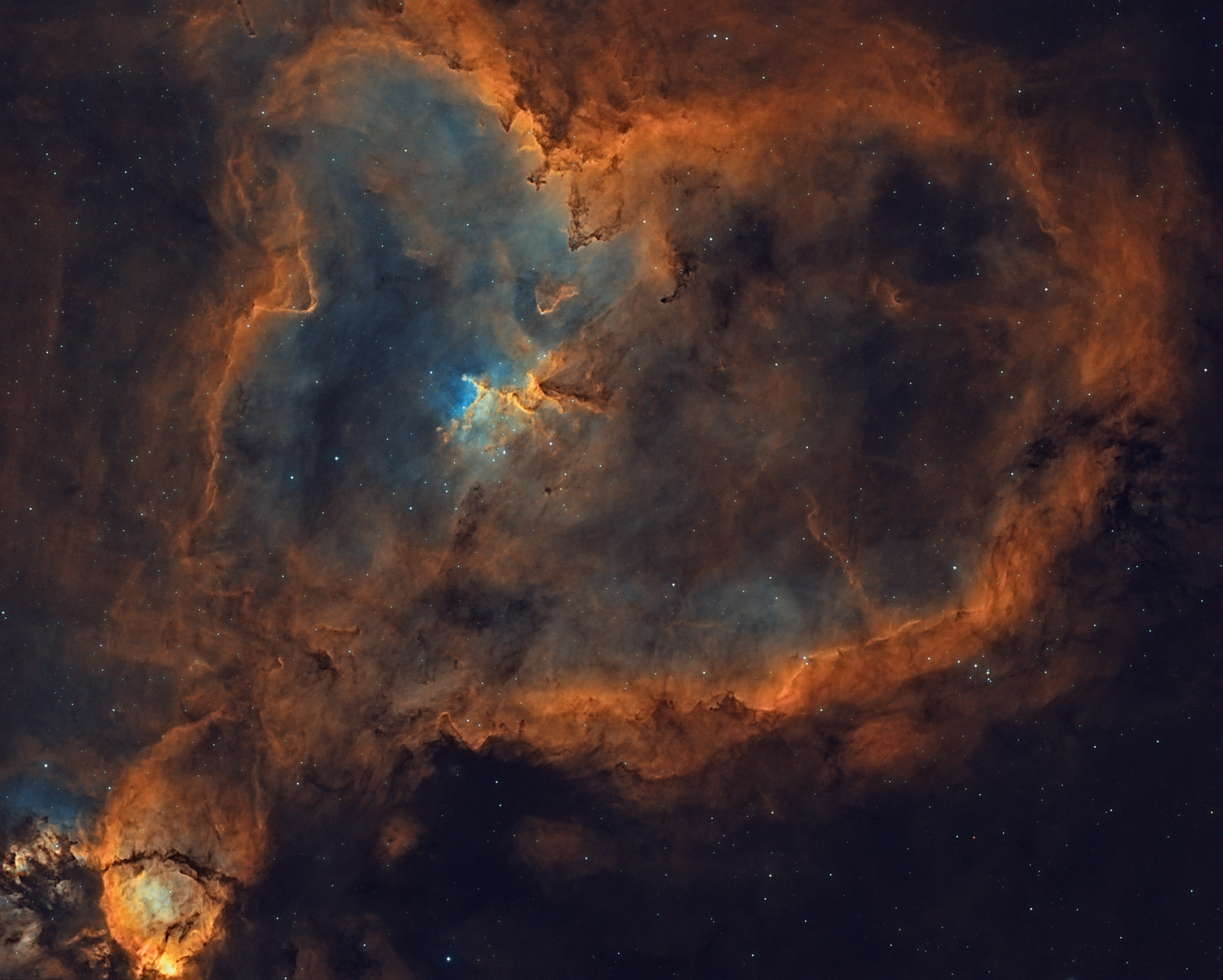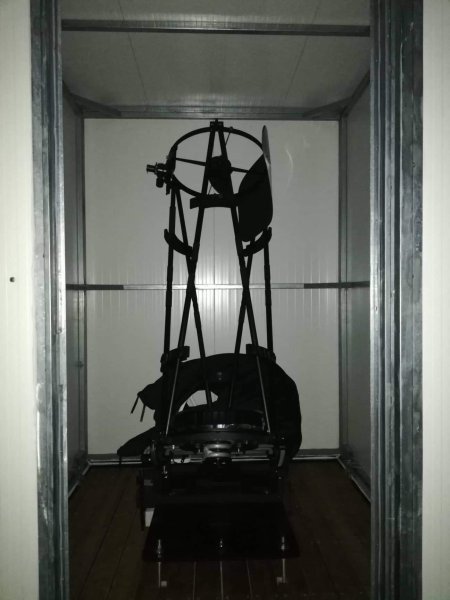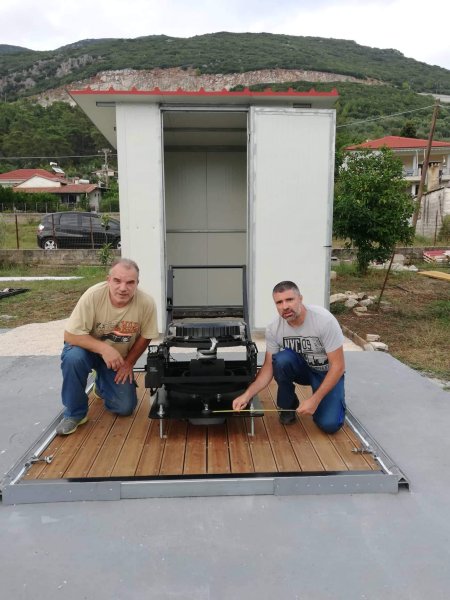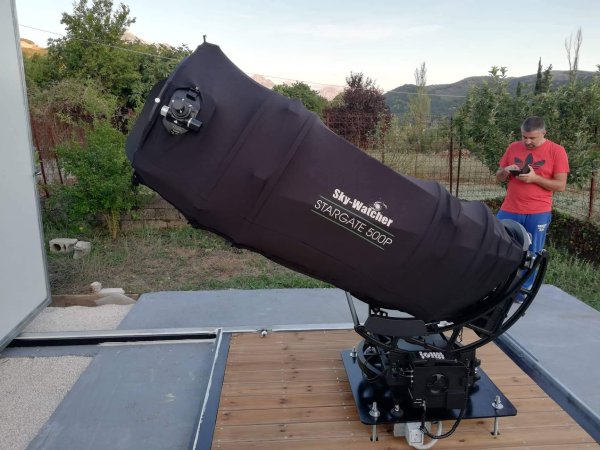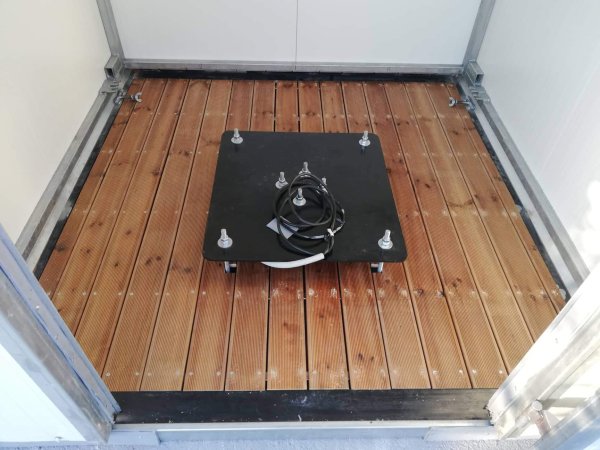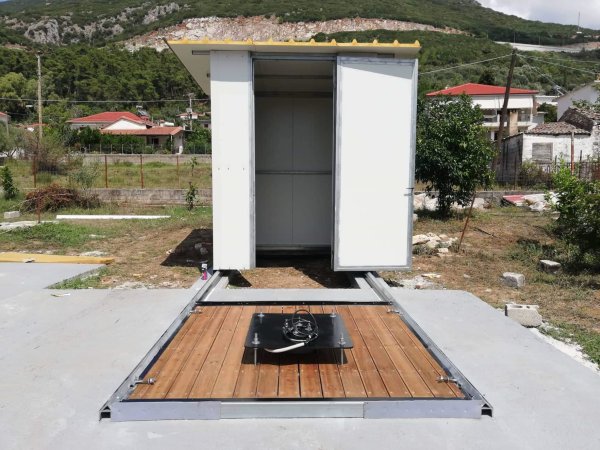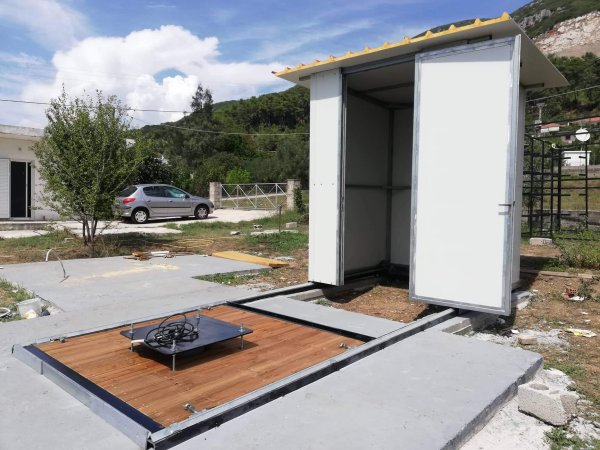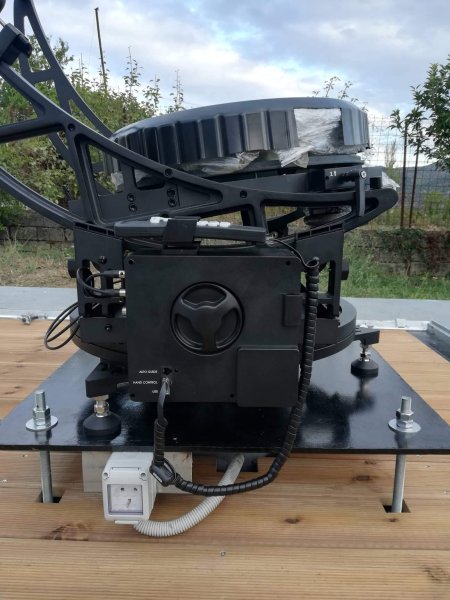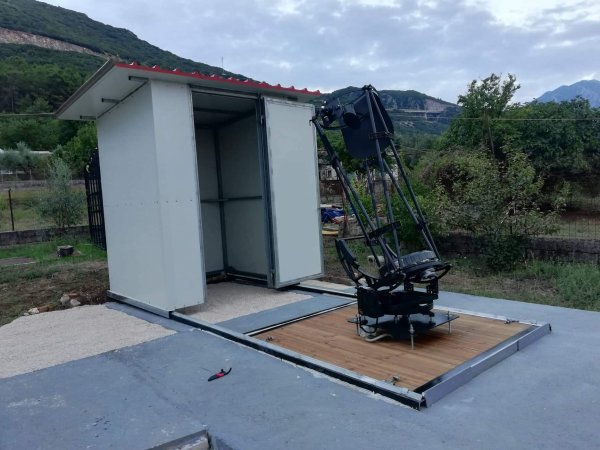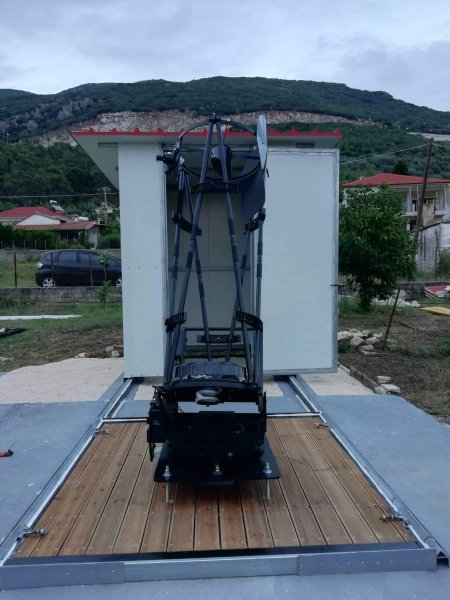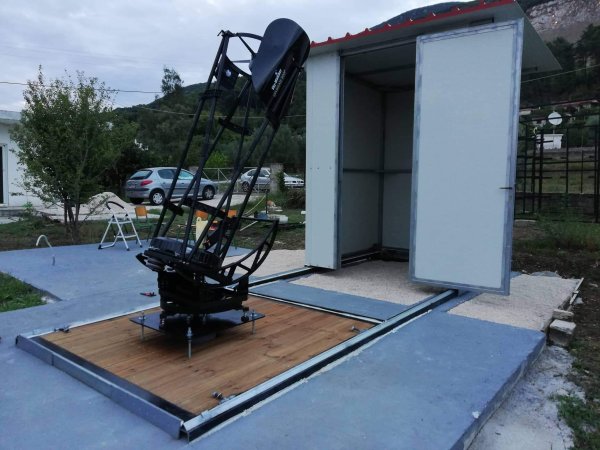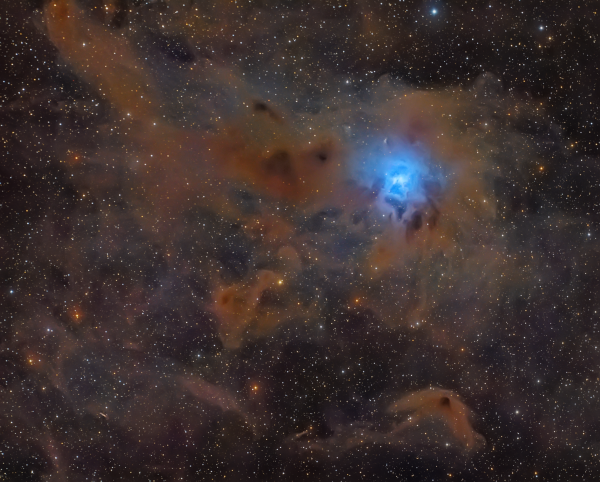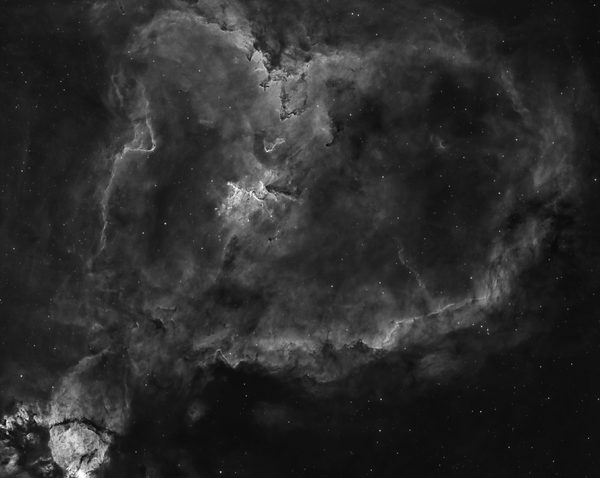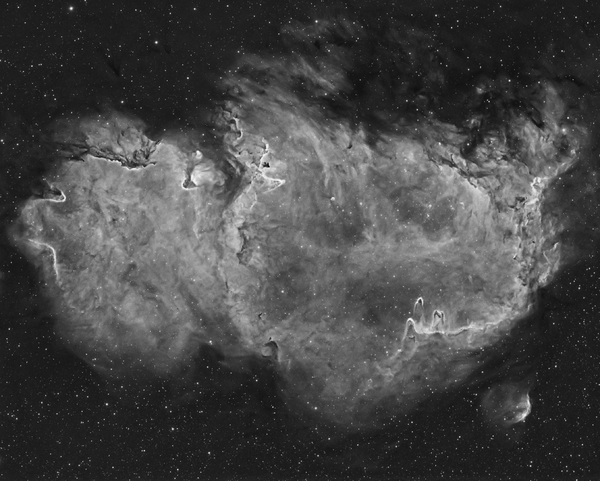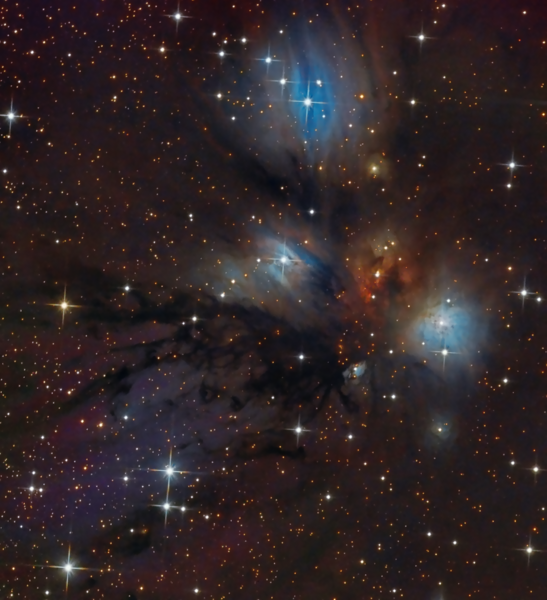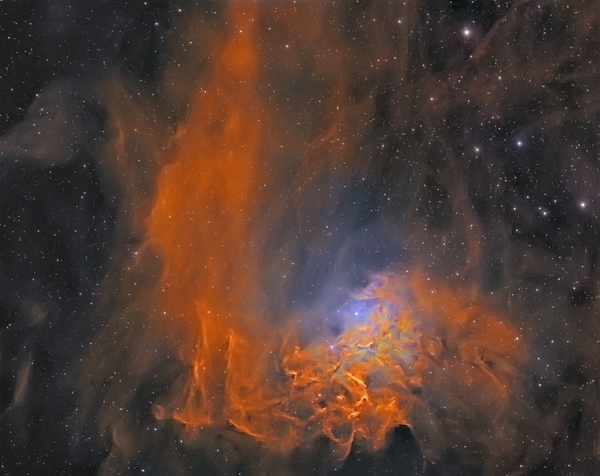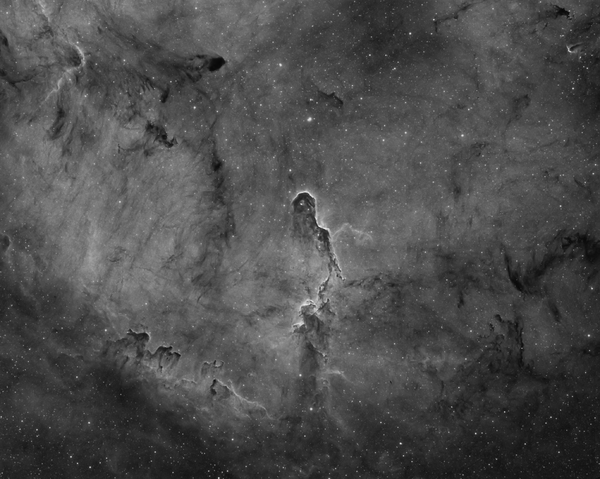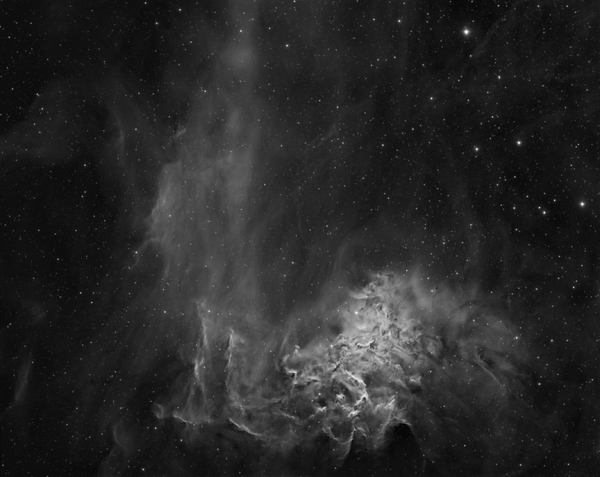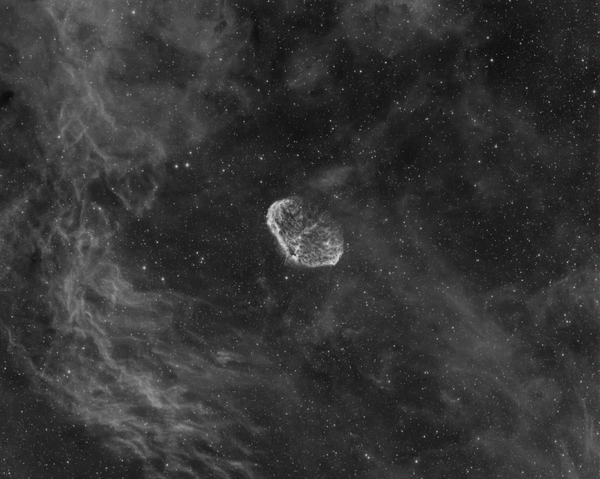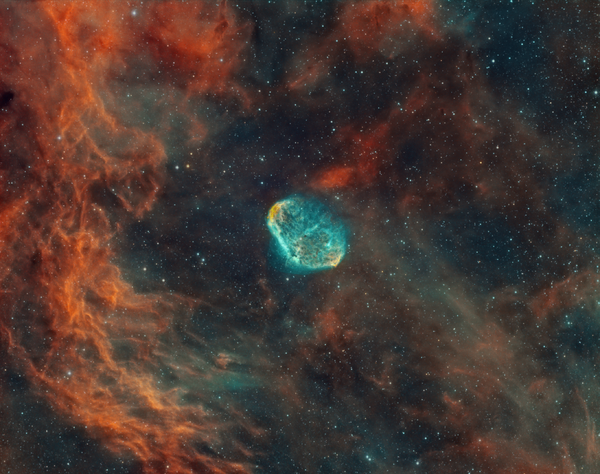-
Αναρτήσεις
48 -
Εντάχθηκε
-
Τελευταία επίσκεψη
-
Ημέρες που κέρδισε
8
Τύπος περιεχομένου
Forum
Λήψεις
Ιστολόγια
Αστροημερολόγιο
Άρθρα
Αστροφωτογραφίες
Store
Αγγελίες
Όλα αναρτήθηκαν από Konstantinos Tsekas
-
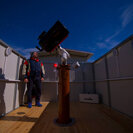
received_391858386245785.jpeg
Konstantinos Tsekas δημοσίευσε μία αστροφωτογραφία σε Τηλεσκόπια και Εξοπλισμός
-

received_632512134881050.jpeg
Konstantinos Tsekas δημοσίευσε μία αστροφωτογραφία σε Τηλεσκόπια και Εξοπλισμός
-

received_592719949154738.jpeg
Konstantinos Tsekas δημοσίευσε μία αστροφωτογραφία σε Τηλεσκόπια και Εξοπλισμός
-

received_440933431384723.jpeg
Konstantinos Tsekas δημοσίευσε μία αστροφωτογραφία σε Τηλεσκόπια και Εξοπλισμός
-

received_1021193045214574.jpeg
Konstantinos Tsekas δημοσίευσε μία αστροφωτογραφία σε Τηλεσκόπια και Εξοπλισμός
-

received_941428087248406.jpeg
Konstantinos Tsekas δημοσίευσε μία αστροφωτογραφία σε Τηλεσκόπια και Εξοπλισμός
-

received_1164261434129621.jpeg
Konstantinos Tsekas δημοσίευσε μία αστροφωτογραφία σε Τηλεσκόπια και Εξοπλισμός
-

received_650966383040405.jpeg
Konstantinos Tsekas δημοσίευσε μία αστροφωτογραφία σε Τηλεσκόπια και Εξοπλισμός
-

received_640273724042848.jpeg
Konstantinos Tsekas δημοσίευσε μία αστροφωτογραφία σε Τηλεσκόπια και Εξοπλισμός
-

received_774428293860228.jpeg
Konstantinos Tsekas δημοσίευσε μία αστροφωτογραφία σε Τηλεσκόπια και Εξοπλισμός
-

*** Iris Nebula *** ( Νεφέλωμα Ίριδα )
Konstantinos Tsekas δημοσίευσε μία αστροφωτογραφία σε Νεφελώματα
*** Iris Nebula *** ( Νεφέλωμα Ίριδα ) Αυτό τo υπέροχο νέφος διαστρικής σκόνης και αερίου έχει αναπτυχθεί σε απόσταση 1.300 έτη φωτός μακριά στα γόνιμα αστρικά χωράφια του αστερισμού του Κηφέα. Μερικές φορές ονομάζεται Νεφέλωμα της Ίριδας και έχει καταλογογραφηθεί ως NGC 7023, ωστόσο αυτό δεν είναι το μόνο νεφέλωμα στον ουρανό που μοιάζει με λουλούδι. Γύρω από αυτό, σκονισμένα νέφη και ψυχρό μοριακό αέριο είναι επίσης παρόντα και δημιουργούν άλλα περίπλοκα και εκπληκτικά σχήματα. Εντός της Ίριδας, το σκονισμένο υλικό νεφελωμάτων περιβάλλει ένα καυτό, νεαρό αστέρι. Το κυρίαρχο χρώμα του λαμπρότερου νεφελώματος ανάκλασης είναι το μπλε, χαρακτηριστικό των κόκκων σκόνης που αντανακλούν το φως των άστρων. Κεντρικά νήματα κοσμικής σκόνης λάμπουν με μια ελαφρώς κοκκινωπή φωτοφωταύγεια καθώς ορισμένοι κόκκοι σκόνης μετατρέπουν την αόρατη υπεριώδη ακτινοβολία του άστρου σε ορατό κόκκινο φως. Στην εκτιμώμενη απόσταση του Νεφελώματος της Ίριδας αυτό το αξιοθαύμαστο ευρύ οπτικό πεδίο έχει πλάτος πάνω από 30 έτη φωτός. NGC 7023 – The Iris Nebula The Iris Nebula is one of many nebulae in the night sky with a common name associated with a flower. This dramatic reflection nebula resides in the constellation Cepheus and includes plenty of dark interstellar dust in the area. Location: Stinger of Scorpius Observatory, Filiates, Thesprotia - Greece. Telescope: William optics star 71 f/4.9 Mount: Avalon linear fast reverse Camera: CCD Atik One 6.0 Filters: Baader LRGB Guide:ZWO ASI290MM Mini (mono) + Skywatcher ed80 Process:CCD stack - Pixinsight - Photoshop CS6 Exposure:Luminance 100 exposures x 180sec Red: 70 exposures x 180sec Green:60 exposures x 180sec Blue: 60 exposures x 180sec Dates: 27/06/2022, 21/07/2022, 23/07/2022, 24/07/2022 Total exposure: 14.5 hours -
What energizes the Heart Nebula? First, the large emission nebula dubbed IC 1805 looks, in whole, like a human heart. The nebula glows brightly in red light emitted by its most prominent element: hydrogen. The red glow and the larger shape are all powered by a small group of stars near the nebula's center. In the center of the Heart Nebula are young stars from the open star cluster Melotte 15 that are eroding away several picturesque dust pillars with their energetic light and winds. The open cluster of stars contains a few bright stars nearly 50 times the mass of our Sun, many dim stars only a fraction of the mass of our Sun, and an absent microquasar that was expelled millions of years ago. The Heart Nebula is located about 7,500 light years away toward the constellation of Cassiopeia. Location: Stinger of Scorpius Observatory, Filiates, Thesprotia - Greece. Work in progress..... Bortle Scale: Class 4 Constellation: Cassiopeia Imaging Telescope: William optics star 71 f/4.9 Equatorial Mount: Avalon linear fast reverse (Avalon Instruments) Guide Scope : Skywatcher ed80 Black Diamond Guide Camera:ZWO ASI290MM Mini (mono) Main Camera: CCD Atik One 6.0 Monochrome Filters: Astrodon Hydrogen Alpha 5nm Exposures: 60X600sec for Hydrogen Alpha : (10 hours total) Binning: 1x1 Image Calibration: 60 dark frames, 230 bias frames, 35 flat frames Sensor temperature: -10°C Image acquisition software: Artemis Capture Telescope guiding software: PHD2 Processing software: Pixinsight - CCD stack - Photoshop CS6 Acquisition dates: 12/09/2020 - 13/09/2020 (H-Alpha Filter) Total exposure : 10 hours
-

*** IC 1848 - The Soul Nebula ***
Ο Konstantinos Tsekas σχολίασε σε Konstantinos Tsekas για αστροφωτογραφία Νεφελώματα
- 2 σχόλια
-
- 1
-

-
- 7 σχόλια
-
- 1
-

-

FLAMING STAR NEBULA_IC405
Ο Konstantinos Tsekas σχολίασε σε Konstantinos Tsekas για αστροφωτογραφία Νεφελώματα
-
**** Cassiopeia Constellation **** *** IC 1848 - The Soul Nebula *** (Το Νεφέλωμα της Ψυχής). Bortle Scale: Class 4 Constellation: Cassiopeia Imaging Telescope: William optics star 71 f/4.9 Equatorial Mount: Avalon linear fast reverse (Avalon Instruments) Guide Scope : Skywatcher ed80 Black Diamond Guide Camera:ZWO ASI290MM Mini (mono) Main Camera: CCD Atik One 6.0 Monochrome Filters: Astrodon Hydrogen Alpha 5nm Exposures: 60X600sec for Hydrogen Alpha : (10 hours total) Binning: 1x1 for each filter Image Calibration: 60 dark frames, 230 bias frames, 35 flat frames Sensor temperature: -10°C Image acquisition software: Artemis Capture Telescope guiding software: PHD2 Processing software: Pixinsight - CCD stack - Photoshop CS6 Acquisition dates: 14/08/2020 - 16/08/2020 (H-Alpha Filter) Total exposure : 10 hours Location: Stinger of Scorpius Observatory, Filiates, Thesprotia - Greece. Stars are forming in the Soul of the Queen of Aethopia. More specifically, a large star forming region called the Soul Nebula can be found in the direction of the constellation Cassiopeia, who Greek mythology credits as the vain wife of a King who long ago ruled lands surrounding the upper Nile river. The Soul Nebula houses several open clusters of stars, a large radio source known as W5, and huge evacuated bubbles formed by the winds of young massive stars. Located about 6,500 light years away, the Soul Nebula spans about 100 light years and is usually imaged next to its celestial neighbor the Heart Nebula (IC 1805)
- 2 σχόλια
-
- 10
-

-

FLAMING STAR NEBULA_IC405
Ο Konstantinos Tsekas σχολίασε σε Konstantinos Tsekas για αστροφωτογραφία Νεφελώματα
-

FLAMING STAR NEBULA_IC405
Ο Konstantinos Tsekas σχολίασε σε Konstantinos Tsekas για αστροφωτογραφία Νεφελώματα
-

FLAMING STAR NEBULA_IC405
Ο Konstantinos Tsekas σχολίασε σε Konstantinos Tsekas για αστροφωτογραφία Νεφελώματα
-

*** Elephant's Trunk Nebula ***
Ο Konstantinos Tsekas σχολίασε σε Konstantinos Tsekas για αστροφωτογραφία Νεφελώματα
- 2 σχόλια
-
- 1
-

-
**** Στον Αστερισμό του Κηφέα **** *** Elephant's Trunk Nebula *** ( Νεφέλωμα της Προβοσκίδας του Ελέφαντα) The Elephant's Trunk Nebula is a concentration of interstellar gas and dust within the much larger ionized gas region IC 1396 located in the constellation Cepheus about 2,400 light years away from Earth. The piece of the nebula shown here is the dark, dense globule IC 1396A it is commonly called the Elephant's Trunk nebula because of its appearance at visible light wavelengths. Location: Stinger of Scorpius Observatory, Filiates, Thesprotia - Greece. Work in progress..... Processing: Kostas Tsekas Telescope: William optics star 71 f/4.9 Mount: Avalon linear fast reverse Camera: CCD Atik One 6.0 Filter: Astrodon Ha 5nm Binning: 1x1 Sensor temperature: -10°C Guide:ZWO ASI290MM Mini (mono) + Skywatcher ed80 Process:CCD stack - Pixinsight - Photoshop CS6 Exposure: 60X600sec Total: 10 hours Dates: 14/06/2020 - 16/06/2020
- 2 σχόλια
-
- 12
-

-
*** Στον αστερισμό του Ηνίοχου *** ## Flaming star nebula (ic 405) ## Στον αστερισμό του Ηνίοχου, σε έναν από τους πιο ευδιάκριτους αστερισμούς του χειμώνα, βρίσκεται ένα πανέμορφο νέφος αερίων και σκόνης. Το γνωστό νεφέλωμα του φλεγόμενου άστρου ή αλλιώς Flaming star nebula (ic 405). Η απόστασή του από τον πλανήτη μας αγγίζει τα 1500 έτη φωτός . Flaming Star nebula IC405 Constellation: Auriga Imaging Telescope: William optics star 71 f/4.9 Equatorial Mount: Avalon linear fast reverse Main Camera: CCD Atik One 6.0 Monochrome Guide Scope : Skywatcher ed80 Black Diamond Guide Camera:ZWO ASI290MM Mini Filters: Astrodon Hα 5nm, Oiii 3nm, Sii 5nm Exposures: 40X600sec for Hα : 6h 40min : 40X600sec Oiii : 6h 40min :24X600sec Sii : 4h Total exposure: 17h 20min Binning: 1x1 Image Calibration: 60 dark frames, 230 bias frames, 35 flat frames Sensor temperature: -10°C Image acquisition software: Artemis Capture Telescope guiding software: PHD2 Processing software: Pixinsight - CCD stack - Photoshop CS6 Acquisition dates:01/01/2022 - 23/01/2022 (H-Alpha Filter) 02/01/2022 ¬– 26/01/2022 (Oiii filter) 18/02/2022 – 24/02/2022 (Sii filter) Location: Stinger of Scorpius Observatory, Filiates, Thesprotia -Hellas Bortle Scale: Class 4
- 8 σχόλια
-
- 13
-

-
*** Στον αστερισμό του Ηνίοχου *** ## Flaming star nebula (ic 405) ## Στον αστερισμό του Ηνίοχου, σε έναν από τους πιο ευδιάκριτους αστερισμούς του χειμώνα, βρίσκεται ένα πανέμορφο νέφος αερίων και σκόνης. Το γνωστό νεφέλωμα του φλεγόμενου άστρου ή αλλιώς Flaming star nebula (ic 405). Η απόστασή του από τον πλανήτη μας αγγίζει τα 1500 έτη φωτός . Location: Stinger of Scorpius Observatory, Filiates, Thesprotia - Greece. Work is progress..... Bortle Scale: Class 4 Constellation: Auriga Imaging Telescope: William optics star 71 f/4.9 Equatorial Mount: Avalon linear fast reverse (Avalon Instruments) Guide Scope : Skywatcher ed80 Black Diamond Guide Camera: ZWO ASI290MM Mini (mono) Main Camera: CCD Atik One 6.0 Monochrome Filters: Astrodon Hydrogen Alpha 5nm Exposures: 40X600sec for Hydrogen Alpha : (6.4 hours total) Binning: 1x1 for each filter Image Calibration: 60 dark frames, 230 bias frames, 35 flat frames Sensor temperature: -10°C Image acquisition software: Artemis Capture Telescope guiding software: PHD2 Processing software: Pixinsight - CCD stack - Photoshop CS6 Acquisition dates: 01/01/2022 - 23/01/2022 (H-Alpha Filter) Total exposure : 6.4 hours
- 2 σχόλια
-
- 22
-

-
Crescent nebula area....... The Crescent Nebula (also known as NGC 6888, Caldwell 27, Sharpless 105) is an emission nebula in the constellation Cygnus, about 5000 light-years away from Earth. It was discovered by William Herschel in 1792.It is formed by the fast stellar wind from the Wolf-Rayet star WR 136 (HD 192163) colliding with and energizing the slower moving wind ejected by the star when it became a red giant around 250,000 to 400,000[citation needed] years ago. The result of the collision is a shell and two shock waves, one moving outward and one moving inward. The inward moving shock wave heats the stellar wind to X-ray-emitting temperatures. Location: Stinger of Scorpius Observatory, Filiates, Thesprotia - Greece. Work in progress..... Bortle Scale: Class 4 Constellation: Cygnus Imaging Telescope: William optics star 71 f/4.9 Equatorial Mount: Avalon linear fast reverse (Avalon Instruments) Guide Scope : Skywatcher ed80 Black Diamond Guide Camera:ZWO ASI290MM Mini (mono) Main Camera: CCD Atik One 6.0 Monochrome Filters: Astrodon Hydrogen Alpha 5nm Exposures: 45X600sec for Hydrogen Alpha : (7.5 hours total) Binning: 1x1 Image Calibration: 60 dark frames, 230 bias frames, 35 flat frames Sensor temperature: -10°C Image acquisition software: Artemis Capture Telescope guiding software: PHD2 Processing software: Pixinsight - CCD stack - Photoshop CS6 Acquisition dates: 05/06/2021 - 29/06/2021 (H-Alpha Filter) Total exposure : 7.5 hours
-

Crescent Nebula Area.......
Ο Konstantinos Tsekas σχολίασε σε Konstantinos Tsekas για αστροφωτογραφία Υπόλοιπα Deep Sky

